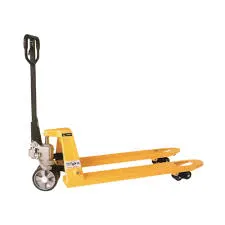


The Manual Chain Pulley Block A Comprehensive Overview
In today’s industrial and construction environments, the use of efficient lifting and hoisting mechanisms is crucial for completing various tasks safely and effectively. One of the most widely used devices for such applications is the manual chain pulley block. This article will explore the features, benefits, and applications of manual chain pulley blocks, providing insights into their importance and functionality.
Understanding the Manual Chain Pulley Block
A manual chain pulley block, also known simply as a chain block, is a mechanical device designed to lift heavy loads vertically by using a system of chains, gears, and pulleys. The primary components of a manual chain pulley block include the chain, hook, lifting mechanism, and frame. The design allows the user to pull on the chain, which then engages the internal gears to lift the load.
Key Features
1. Mechanical Advantage One of the most significant benefits of a manual chain pulley block is its ability to provide mechanical advantage. By using a system of pulleys, the amount of force required to lift a load is significantly reduced, making it easier for operators to handle large weights.
2. Durability Manual chain pulley blocks are typically constructed from high-quality materials, such as alloy steel, which enhances their durability and lifespan. These devices are designed to withstand heavy loads and harsh working conditions, making them a reliable choice for various industries.
3. Versatility Chain pulley blocks can be used in a wide range of applications, from construction sites to warehouses. They can lift loads vertically and are often employed in situations where other mechanical devices may be impractical.
4. Portability Unlike large electric hoists or cranes, manual chain pulley blocks are relatively lightweight and portable. This feature allows them to be easily transported to different job sites and set up as needed.

Benefits of Using Manual Chain Pulley Blocks
1. Cost-Effectiveness Compared to electric hoists and other powered lifting devices, manual chain pulley blocks are often more affordable. Their low cost combined with minimal maintenance requirements makes them an economical lifting solution for many businesses.
2. Simplicity Manual chain pulley blocks are easy to operate, requiring minimal training for users. The straightforward mechanism allows operators to quickly learn how to use the device safely and efficiently.
3. Safety When properly utilized, manual chain pulley blocks can enhance workplace safety. They reduce the risk of accidents associated with lifting heavy loads, as operators can lift items from a safe distance without physically handling them.
Applications in Various Industries
Manual chain pulley blocks are employed in a variety of sectors, including
- Construction Used for lifting and moving building materials, scaffolding, and equipment. - Shipping and Warehousing Assisting in the loading and unloading of goods from trucks and containers. - Manufacturing Employed in assembly lines to lift components and machinery during the production process. - Automotive Useful in vehicle maintenance and repair for lifting engines and heavy parts.
Conclusion
The manual chain pulley block remains an essential tool in many industries due to its simplicity, versatility, and effectiveness in lifting heavy loads. With a variety of applications and significant benefits over other lifting devices, it is a valuable asset for any operation that requires the safe and efficient movement of heavy materials. As industries continue to evolve, the manual chain pulley block will undoubtedly remain a steadfast solution for lifting needs. Understanding its operation, features, and applications can lead to greater efficiency and safety in various work environments.



